Clean vs Power Clean: Difference Explained
Author:
Reviewed by:
(21 years of Oly Lifting experience)
Unlock your full potential by engaging with our experts and community! Have questions about your fitness journey or looking for expert advice on weightlifting techniques? Don’t hesitate — leave a comment below and Sergii Putsov will provide a personalized answer and insights to help you reach your goals.
Torokhtiy is reader-supported. Some links are affiliate links, and we may earn a commission at no extra cost to you. See our disclosure page for details.
Find out all about clean vs power clean. In this article, I will explain the difference between clean and power clean, their benefits and peculiarities.
My coach used to teach us that despite we perform the snatch and the clean from the platform using two arms and there are the pull and the power position in both of them, these are DIFFERENT exercises with different amplitudes, dynamics, and accents.
As for the clean vs power clean, they may also seem to be almost identical, yet, there’s a huge difference hidden behind a similar look.
So what’s the initial difference between the clean and the snatch? And what’s so specific about the full clean vs power clean? Reveal the answers to these and other questions here.
Clean vs power clean – The difference between the clean and power clean is in the catch height. In the clean, athletes squat rather deep to catch a barbell which usually allows them to lift more weight. In the power clean, a weightlifter doesn’t go down but pulls a bar as high as possible and catches it right away.
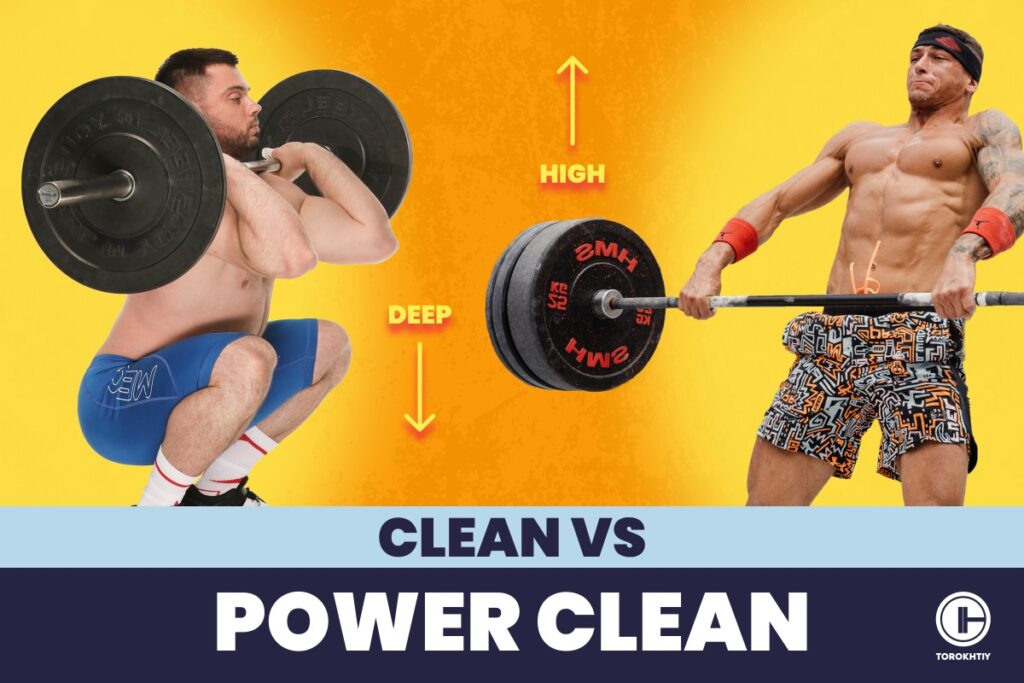
Clean vs Snatch
At first, we must compare the technical features of the clean to those of the snatch and fully understand all specificities:
- Different starting positions. For the clean, the grip is more narrow, the feet are closer to the bar, and the shoulder line is only slightly beyond it.
- The angles in the ankle, knee, and hip joints are significantly wider. That gives a possibility for a powerful start.
- Less time is given for the barbell acceleration due to the shorter pull.
- The contact point in the power position is lower (with the proper technique) due to the narrower grip.
- The barbell speed on average is 20% lower than during the snatch.
- The height of the barbell catch on average is 23% lower than in snatch.
- Ground reaction force during the barbell stabilization in the catch phase on average is 34% higher than in the snatch.
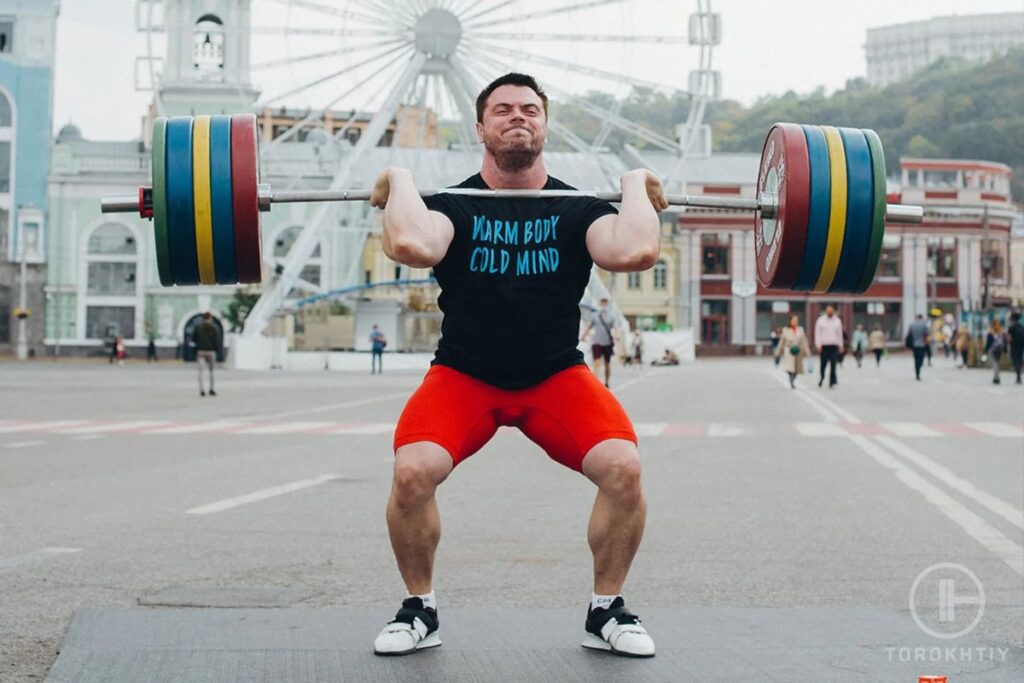
According to the features of each exercise technique, it is clear that the clean logically differs from the snatch.
If during the snatch performance the pull height and the barbell acceleration play the essential role, then while doing the clean, it is the first pull strength and solid catch in the squat position with instant subsequent recovery that matters.
What Is the Clean?
The clean is the first part of the clean and jerk – the Olympic weightlifting exercise. It is the most optimal and effective way to transfer a barbell from a platform to the shoulders.
How to Do the Clean?
1. Starting Position
Stand with your feet shoulder-width apart and position the bar so it aligns with the mid-foot. Grab the bar with arms slightly wider than shoulder width and keep your back flat. The shoulders should be covering the bar.
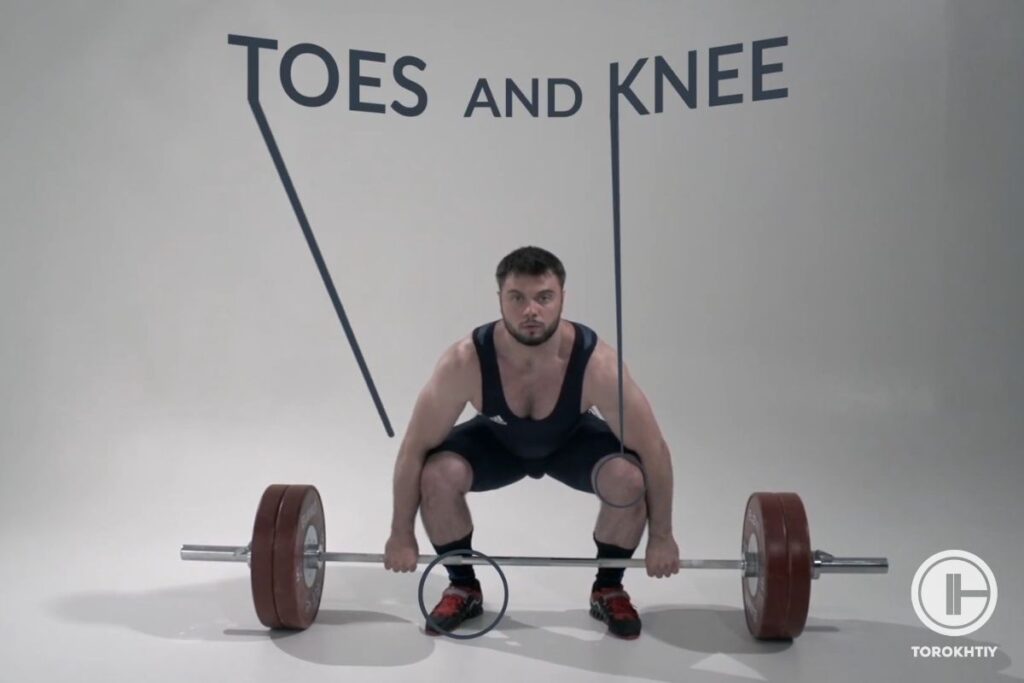
2. First Pull
Start by pulling the bar off the ground. It should rise in a straight line and stay close to your body.
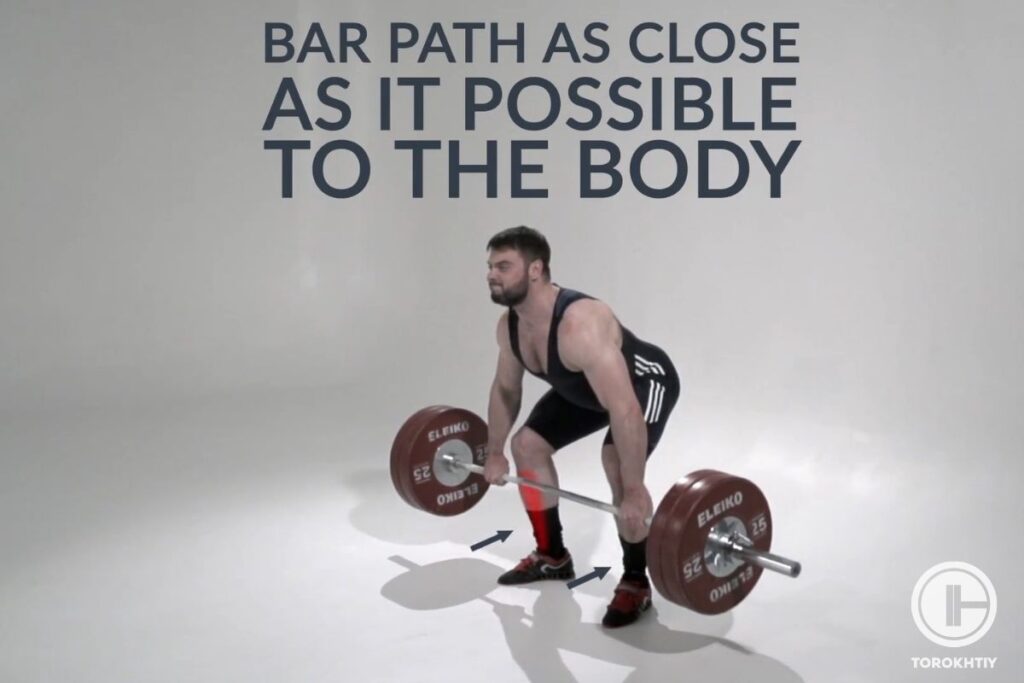
3. Second Pull and Power Position
As the bar passes your knees prepare for the explosive part of the lift. Extend your hips, knees and ankles explosively to propel the bar up. As you extend, pull with your arms and direct your elbows up to be able to transition under the bar.
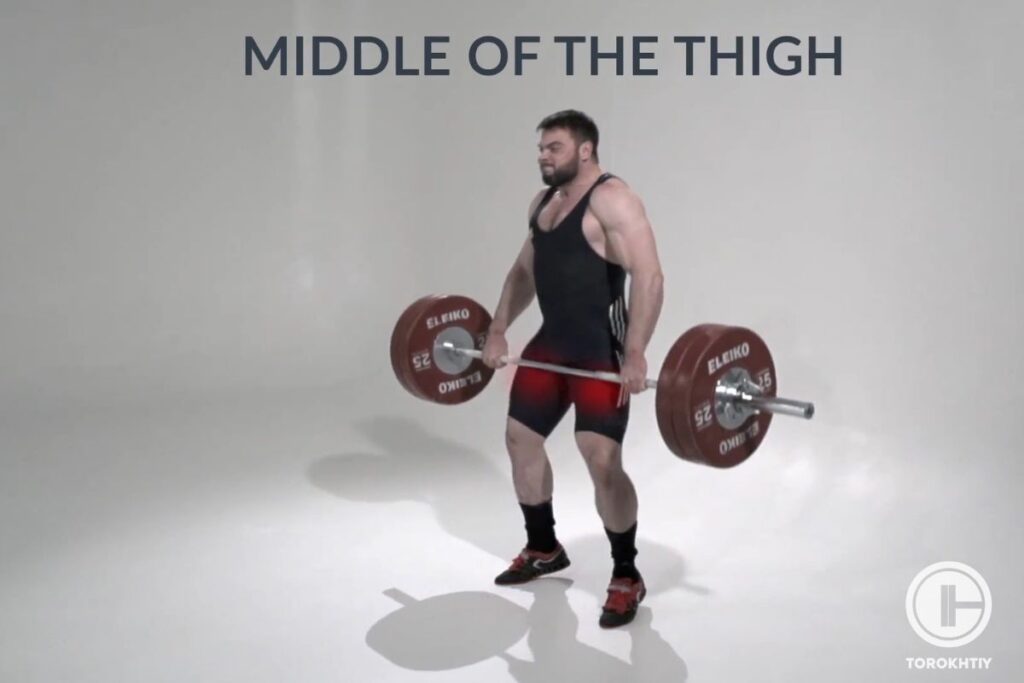
4. Turnover and Catch
Quickly rotate your elbows forward and under the bar as you start to drop into a full depth squat. Secure the bar on the front of your shoulders.
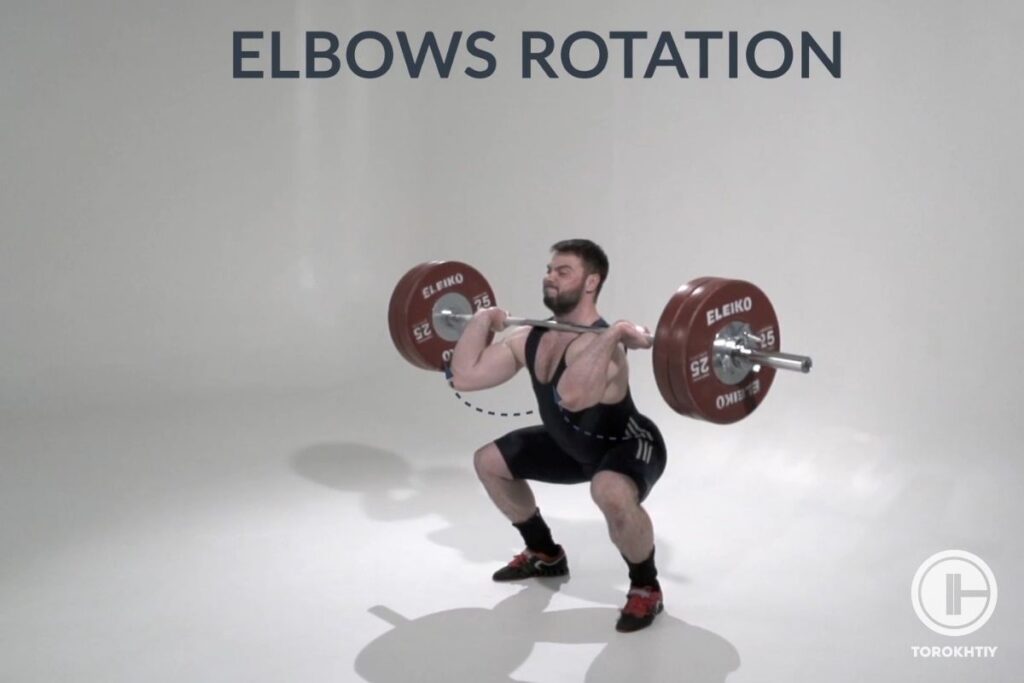
5. Recovery
After catching the bar, straighten your legs and stabilize your position. Control the bar back down.
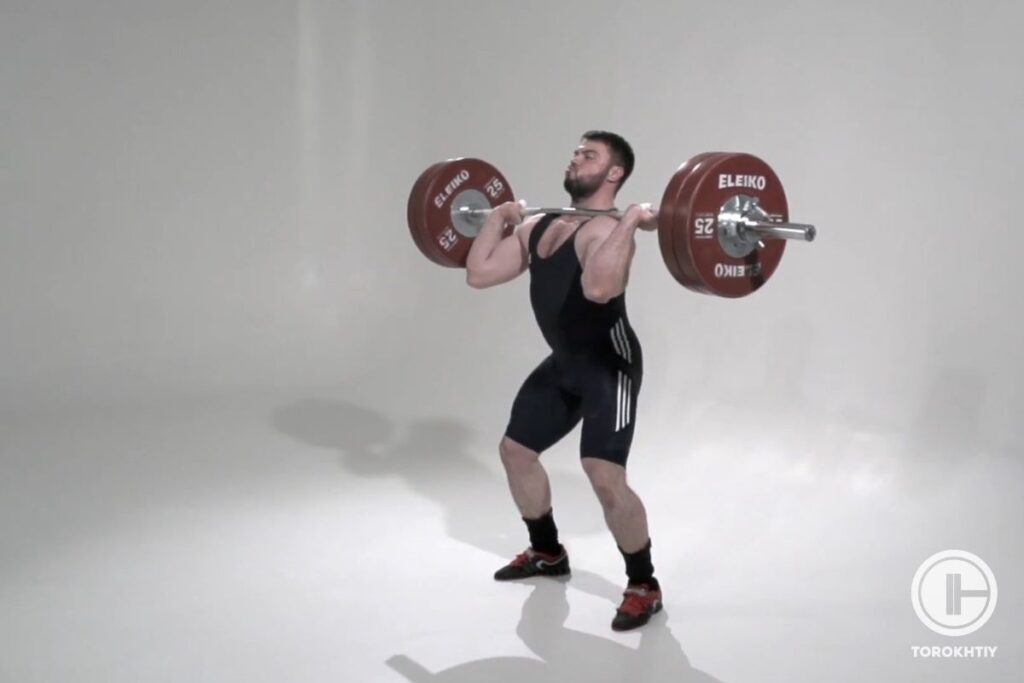
What Is the Power Clean?
The power clean is one of the variations of the clean. Yet, it has its own peculiarities, mechanics, and effects.
In order to perform the power clean, follow all the steps from the previous part about the clean up to the power position. However, after the explosion, direct the bar powerfully up and receive it as high as you can without going down to the squat position.
The depth of the catch also varies from almost the upright position to your hips parallel to the ground in case the load is rather big.
Some athletes also ask me about the muscle clean vs power clean. The first one has no body-bar contact point while the latter is more similar to the clean in terms of explosion. Usually, the muscle clean is performed with light weights as a warm-up or a drill to improve the turnover technique.
How to Do the Power Clean?
1. Starting Position
Start with your feet shoulder-width apart and hands just outside the shoulders on the bar. The bar starts over the mid-foot, similar to the clean. Keep your back flat and shoulders slightly in front of the bar.
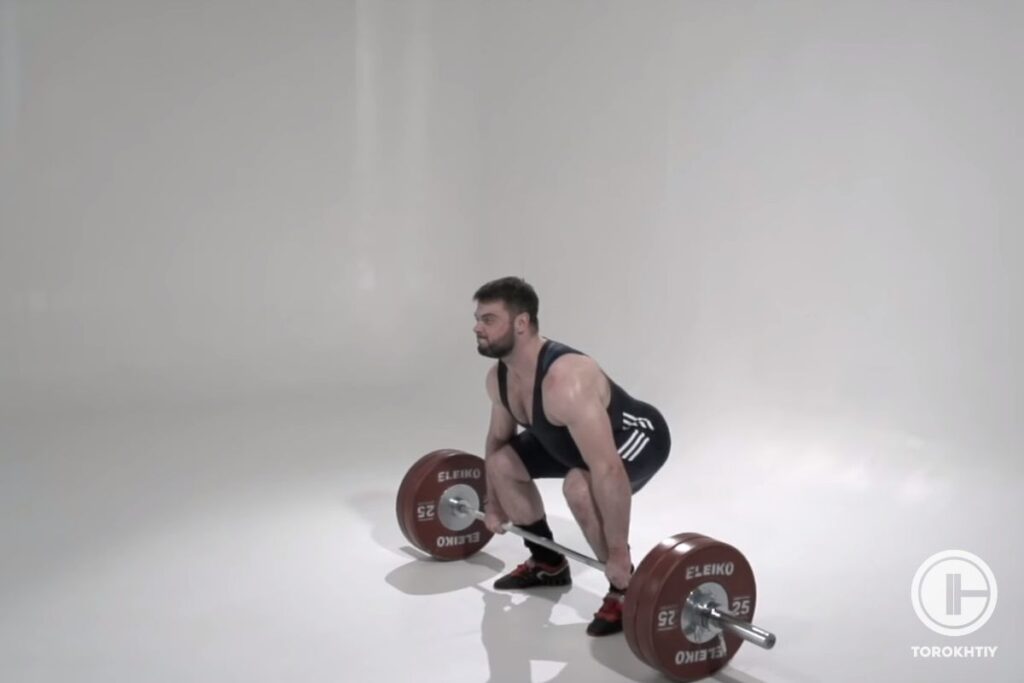
2. First Pull
Lift the bar off the floor and keep it close to your body, Make sure it travels in a straight vertical line.
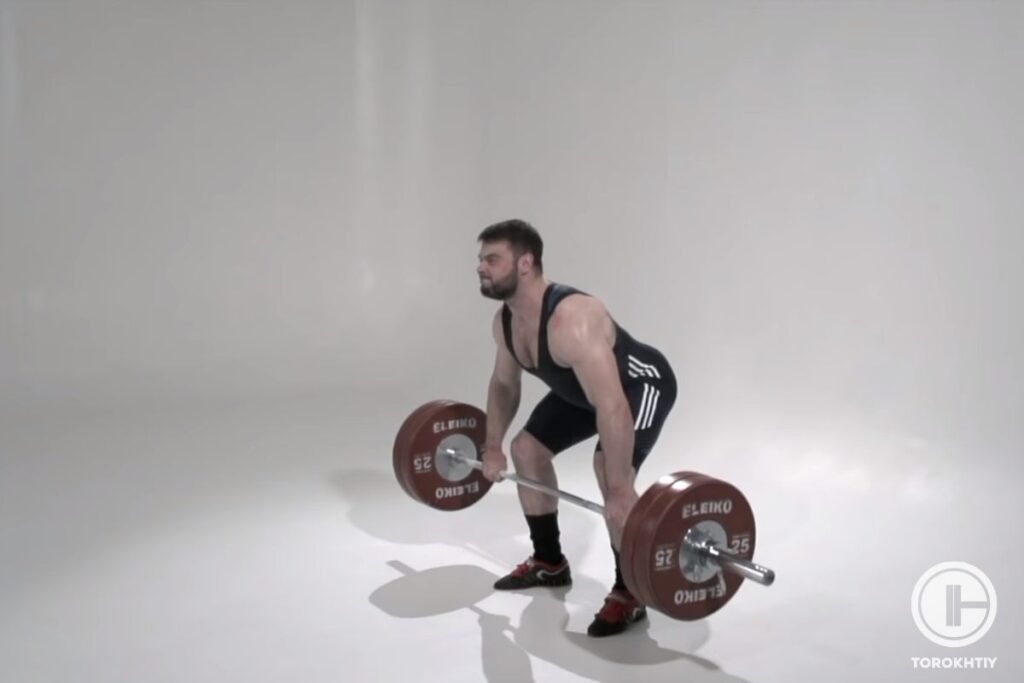
3. Second Pull and Power Position
As in the clean, just continue to move the bar above your knees and when it does the second pull phase starts. Explosively extend your hips, knees, and ankles to drive the bar up. Pull your elbows out to get a rapid and high turnover.
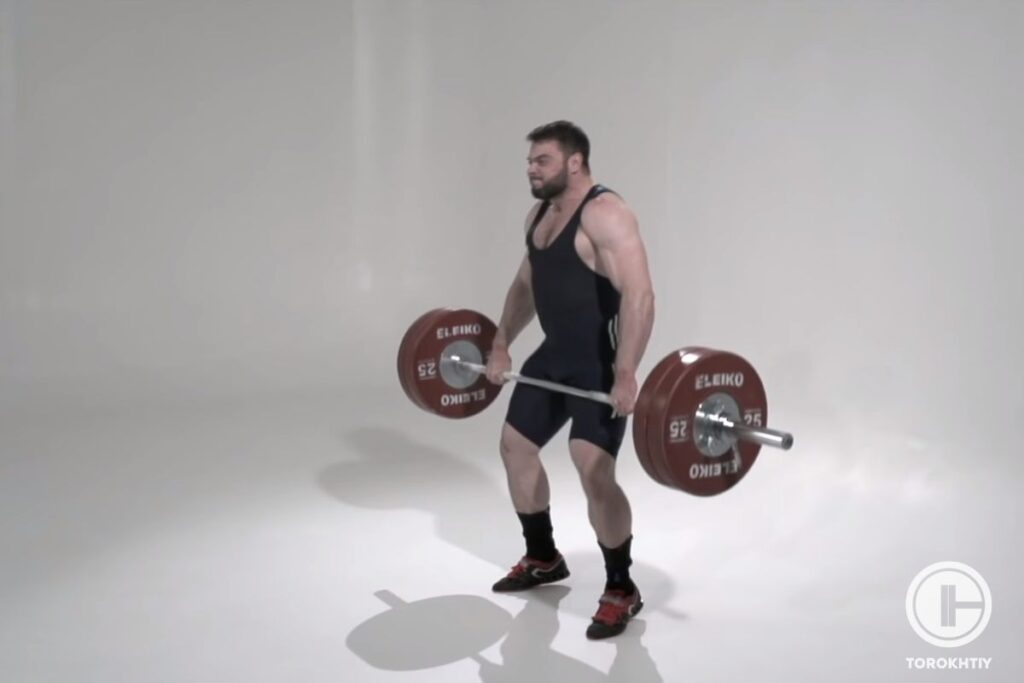
4. Turnover and Catch
You want to catch the bar as high as possible, minimizing squat depth. The catch depth varies from nearly upright to hips parallel to the ground, depending on the weight.
Quickly rotate your elbows under the bar to secure it on your shoulders.
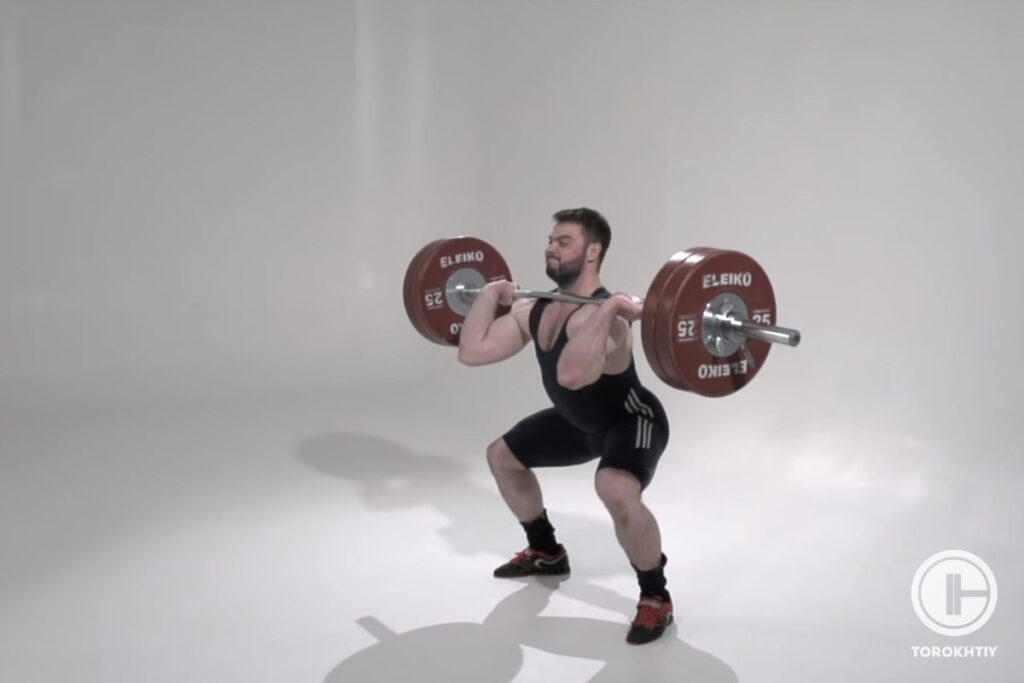
5. Recovery
Stabilize your position; stand up fully with the bar resting on your shoulders. Lower the bar back to the platform in a controlled manner.
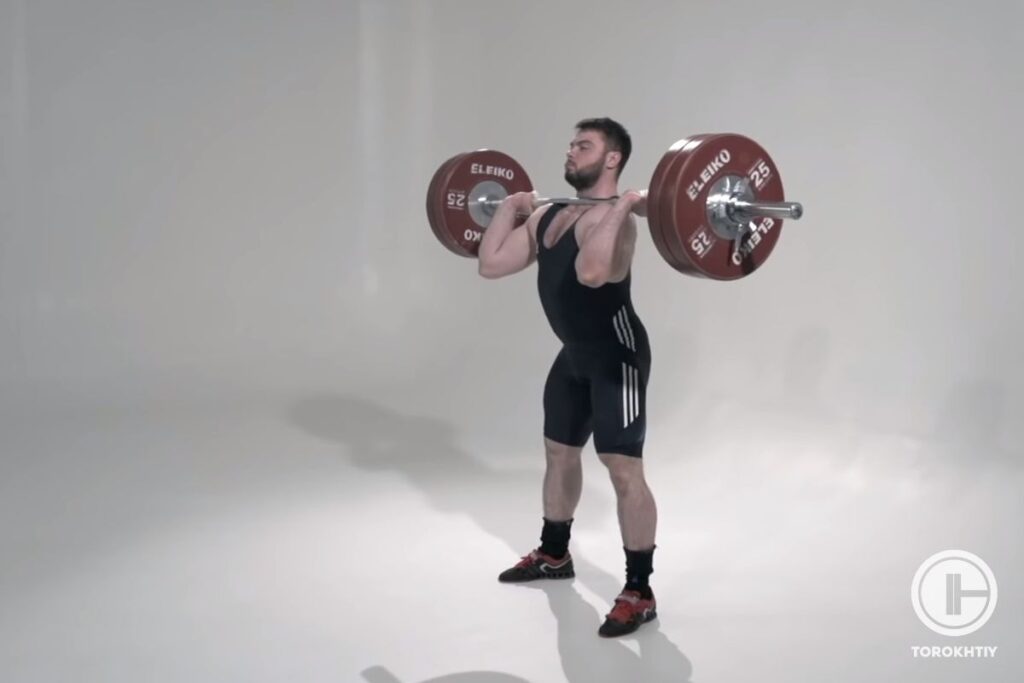
Power Clean vs Squat Clean
Despite the clean and power clean may seem to be quite similar, there are some significant differences that you should consider while planning your training.
Follow us!

Free!
Get a 2-week Weightlifting Program as a bonus for the subscription to kickstart your training plan!

Free!
1. Mobility, Squat Depth Requirements and Technique
The squat clean involves a front squat as part of its technique, so you need a lot of flexibility and strength in your legs and core. This depth in the squat, that you may have heard being called “the hole” needs a lot of mobility, especially in the hips and ankles.
The added depth makes the clean more complex and challenging but also allows you to handle heavier weights because the bar doesn’t need to be pulled as high compared to the power clean.
On the other hand, the power clean involves catching the bar usually above parallel, which means – less depth in the squat. This makes the power clean generally more accessible for beginners, who may not have the level of mobility the deep front squat needs.
Both of these follow a similar movement pattern, but the technique and muscle demands are different because of the squat depth. The squat clean needs you to transition into a deep squat under the bar, so your quads and back work harder and longer. It tests your strength and endurance, but it also improves mobility.
The power clean is more about the explosiveness and power of the lift. The squat isn’t as deep so there’s less time under tension for your muscles, which makes the power clean a faster, but often lighter, lift in terms of the weights you typically manage.
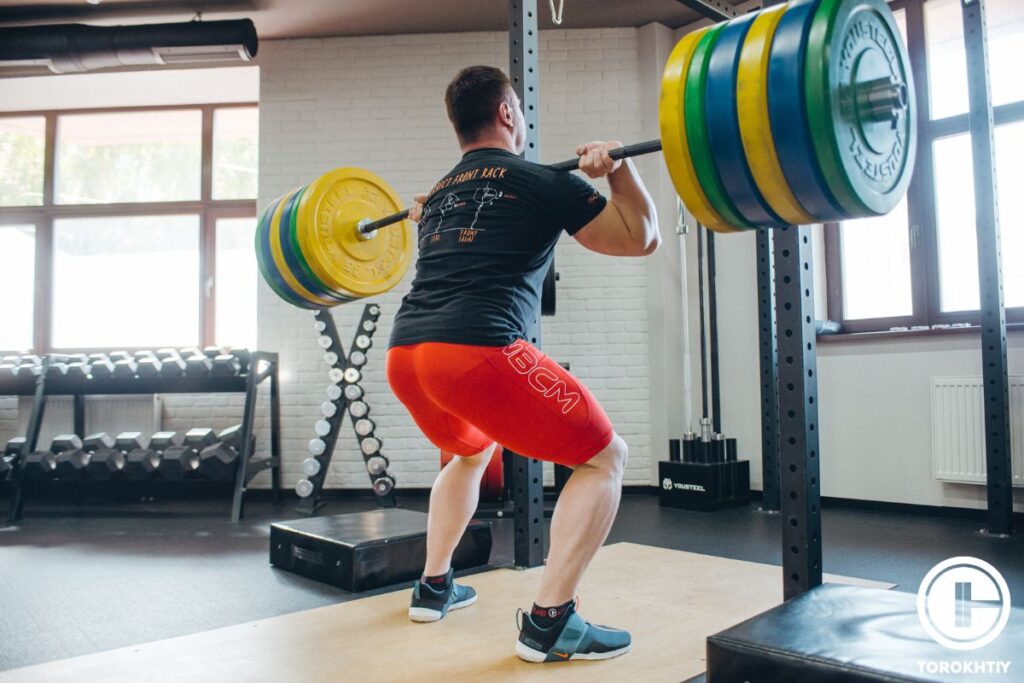
2. Heavy Weights
The fact that weights beyond 80% 1RM are rather heavy for anyone is obvious. It means that the further weights added will make upward travel of the barbell (when the maximum acceleration power is applied in the second pull) decrease.
The maximum flight height of the barbell becomes lower and lower, while the catching point may vary according to the athlete’s mobility but still has its limit. The data collected from the top-level athletes have shown that the difference between maximum barbell height and catch points is approx.
19% (to compare with 9% in the snatch). I’ve put these arguments forward to clearly justify the utility of the power clean in athlete’s preparation.
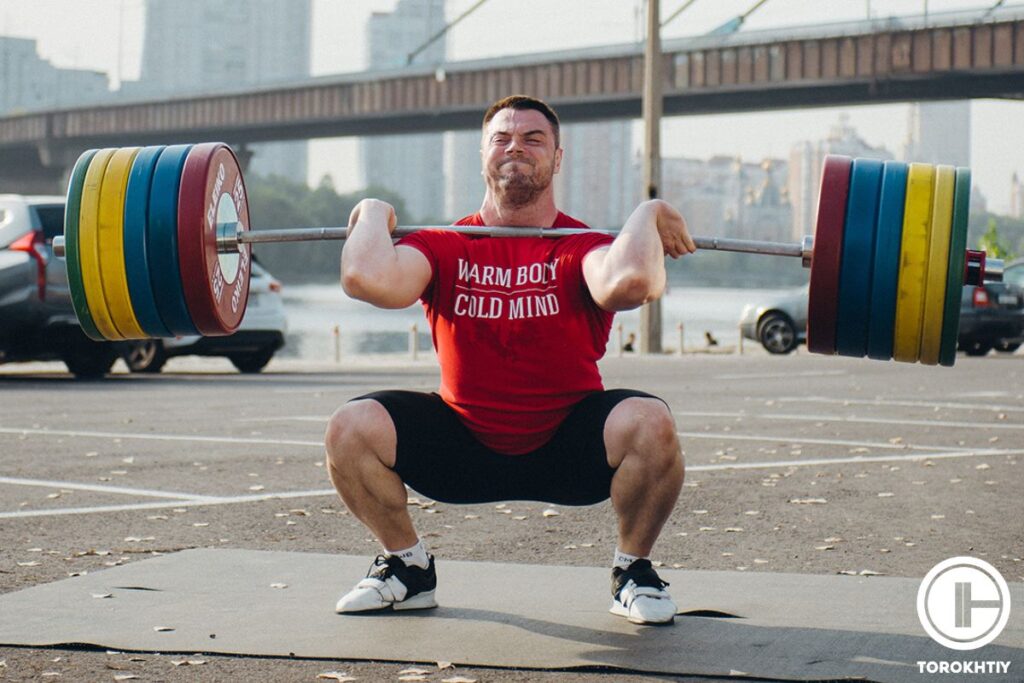
It’s not a coincidence that I focus so much on this case. Training programs built by the majority of athletes are aimed at maximum results, including their maximum result in the clean and jerk, but at the same time, they rely on the power clean too much.
Each of them has its own explanations – it is faster, no need to rise from the deep squat, mobility limitations, etc.
However, the maximum barbell velocity in the clean is far less than in the power clean. As the difference between maximum barbell upward travel and the catch point is approximately 19%, it is WRONG to go for a higher catch in the clean with the maximum weight.
The athlete MUST understand and be ready for heavy weights to hammer him to the platform. It means that this phase must be practiced well.
It’s rather naïve to assume that working on the power clean only will make you ready for the big weights. They will surely press you down and your muscles and “angles” will turn out to be unready for such loads and positions. If you have no skill in operating with light weights in the deep squat position you are unlikely to have it when weights get real either.
I believe that the power clean is a good auxiliary exercise for Olympic weightlifters, but it’s important to note that athletes from different sports, as well as the general population, might perform the power clean as a main exercise in their training programs.
It must be used in the preparatory period both as a separate independent exercise and in complex with squats and jerk variations.
It’s perfect to develop the explosive strength of your legs, the quickness of elbows turnover, and the solidness of the barbell catch. But if 1RM clean is what we are talking about, then the accent must be shifted to deep squat clean variations.
Also, you should mind that excessive work volume in the power snatch and power clean inevitably leads to knee tendons inflammation and injury.
3. Oscillation
Nobody canceled the oscillation qualities of the bar. However, this effect is easier to see with extreme weights during top athletes’ performance.
The bar seems to be bent beyond the breaking point and the fact that the athlete easily copes with this and lifts this weight up looks like pure magic!
According to biomechanical analysis, the axle load during snatch performance on average is 143% of the barbell weight. During the clean, this index pumps up to 173%, which means that the barbell falls on the athlete with 30% more weight and aggressiveness.
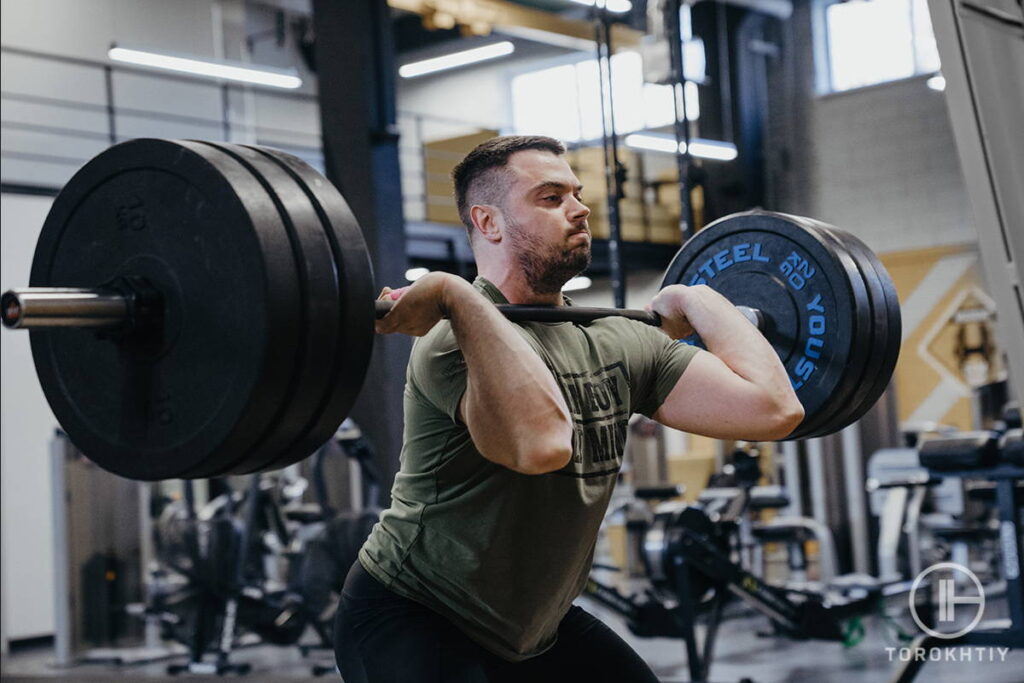
This is a result of the following factors:
- The grip is wider in the catch phase of the snatch. Thus, the bar suffers less bending effect due to distanced fulcrum points.
- Because of the bigger movement amplitude in the snatch, the difference between the maximum barbell height and catch points is approx. 9% (10% less than in clean).
- Clean pull phases are always made with a more narrow grip, making the bar bend more. In addition, the distance the barbell falls from in the catch phase is higher, giving it additional acceleration.
- Comparatively, the power clean exhibits much less oscillation, primarily because: The bar drop is significantly less as athletes catch the bar in a higher position. This means – less bending and oscillation of the bar.
- The catch phase in a power clean involves less depth, typically with fairly stiff legs in a partial squat. This limited range of motion results in a less effective use of the stretch reflex in the legs and significantly reduces the bar’s amortization effect.
Such a detailed examination of movement phases is also crucial for understanding the importance of the ability to work with barbell amortization from the deep squat. Thus, you should practice coping with oscillation exactly in the full clean position to be able to handle it successfully at a competition.
For those who think that it is important only when the barbell has 3 or more plates on each side, I want to say that the bar oscillates even with no plates at all. Just try to make the high pull and feel for yourself. Besides, I’d like to note that this skill requires a long development and not only in the clean but also in the front squat.
Conclusion
To sum up, the power clean is a great and useful exercise. It could be used separately in functional fitness and many other speed-strength sports (American football, track and field, wrestling). It’s perfect to develop the explosive strength of your legs, the quickness of elbows turnover, and the solidness of the barbell catch in weightlifting.
But you should follow the proper methodology and technique, taking into account the biomechanical peculiarities of the deep-squat clean if you seek improvement in clean & jerk maximum.
What do you choose: the clean or the power clean, and why? Share your thoughts below!
References:
- All photos are made by Torokhtiy Media team.
Also read:
Why Trust Us?
With over 20 years in Olympic weightlifting, strength training, nutrition coaching, and general fitness our team does its best to provide the audience with ultimate support and meet the needs and requirements of advanced athletes and professional lifters, as well as people who strive to open new opportunities and develop their physical capabilities with us.
By trusting the recommendations of our certified experts in coaching, nutrition, and sports training programming, as well as scientific consultants, and physiotherapists, we provide you with thorough, well-considered, and scientifically proven content. All the information given in the articles concerning workout programming, separate exercises, and athletic performance, in general, is based on verified data.
The product testing process is described in more detail here.
Author: Sergii Putsov
Head of Sport Science, PhD
Best Results: Snatch – 165 kg,
C&J – 200 kg
Sergii Putsov, Ph.D., is a former professional weightlifter and National team member, achieving multiple medals in the 94 kg weight category at national competitions. With a Master’s degree in “Olympic & Professional Sport Training” and a Sport Science Ph.D. from the International Olympic Academy, Greece, Sergii now leads as the Head of Sport Science. He specializes in designing training programs, writing insightful blog articles, providing live commentary at international weightlifting events, and conducting educational seminars worldwide alongside Olympic weightlifting expert Oleksiy Torokhtiy.
Reviewed by: Oleksiy Torokhtiy
Olympic Weightlifting Champion
Best Results: Snatch – 200 kg,
C&J – 240 kg
Oleksiy Torokhtiy is a professional athlete boasting 20 years of experience in Olympic weightlifting. With multiple European and World titles under his belt, he has showcased his prowess in two Olympic Games (Beijing 2008 and London 2012). Upon concluding his illustrious career, Oleksiy dedicated himself to coaching. By 2022, he had conducted over 200 weightlifting seminars worldwide. He is the visionary behind an international sportswear and accessories brand known for its motto, “Warm Body Cold Mind.” Additionally, he is an esteemed author and the creator of a series of training programs and eBooks.





Still have questions after reading our article? Unlock your full potential by engaging with our experts and community! Don’t hesitate — leave a comment below and Sergii Putsov will provide a personalized answer and insights to help you reach your goals.